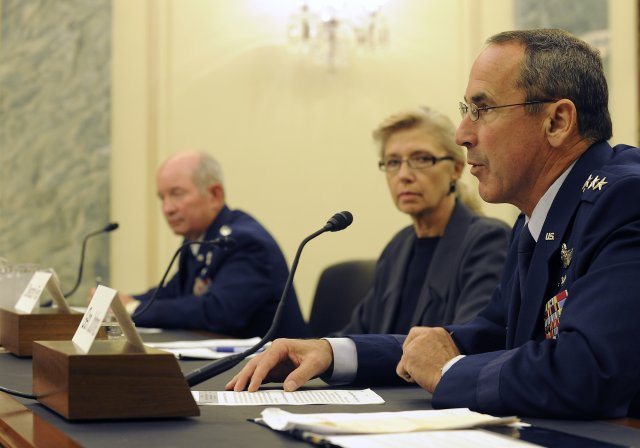Combatant and major command officials provided testimony to members of the Senate Armed Services Subcommittee on Seapower to propose a reduction of strategic airlift aircraft numbers in a session here July 13.
Gen. Raymond Johns, the Air Mobility Command commander, and Gen. Duncan McNabb, the U. S. Transportation Command commander, provided the committee with information supporting an Air Force request to lower the aircraft inventory requirement of 316 C-17 Globemaster III, C-5A Galaxy and C-5M Super Galaxy aircraft to a minimum of 301 strategic airlift aircraft.
“AMC is charged with maintaining our strategic airlift fleet and ensuring it has the capability and capacity required by United States Transportation Command and the geographic combatant commander’s,” Johns said.
He added that AMC officials are “keenly aware” of the financial difficulties facing the nation and the command’s goal is to fulfill mission requirements in a fiscally responsible manner.
The retirement of a portion of older C-5A aircraft would not diminish Air Force airlift capability and potentially save $1.2 billion in taxpayer dollars in future years’ defense planning, Johns said.
“Our ability to manage the strategic airlift over the coming years will enable us to be more fiscally responsible to our nation,” McNabb added.
He said the reduction of aircraft would not hinder USTRANSCOM ability to support combatant commanders around the globe.
The requirement to maintain a bottom limit of 316 aircraft came from the Mobility Requirements Study completed in 2001. With changing requirements and an additional 40 more C-17’s in the inventory than anticipated when that study was completed, Johns said, the exact mix of aircraft used in that study is less critical than the mission capability of the newer C-17 airframe.
McNabb agreed.
“As more capable aircraft like the C-17 and the C-5M enter the inventory, requirements can be maintained with fewer aircraft. The 316 strategic airlift floor requires us to keep unneeded, the less capable C-5A in the inventory.”
McNabb added the fiscal savings are important but not as important as taking care of the Airmen who fly and maintain the aircraft and the use of manpower is absolutely critical to mission success.
“I need to be able to put my best people on my best assets,” McNabb said.
“Reducing the fleet would reduce the workload on our Airmen,” Johns added.
Johns said there is no reason for the Air Force to maintain a capability that is not needed and the ultimate goal of both AMC and USTRANSCOM is to maintain the best streamlined, economically sound fleet possible.










